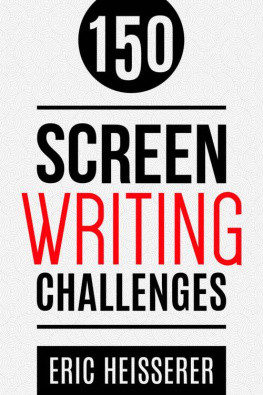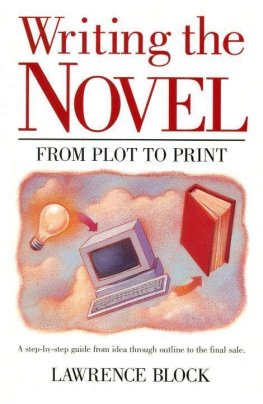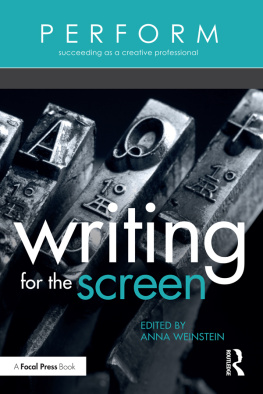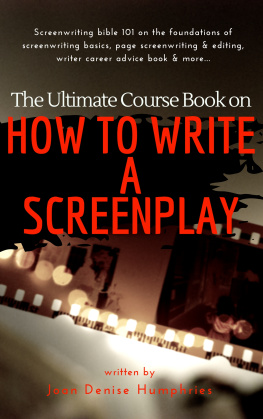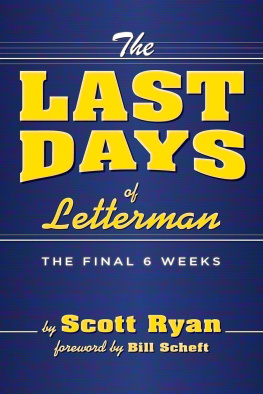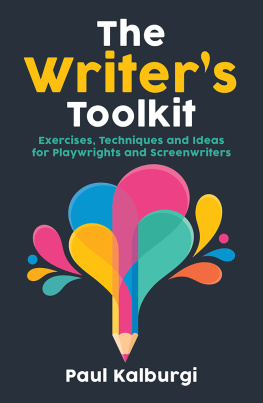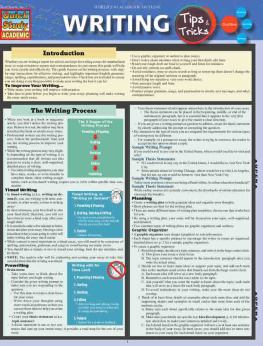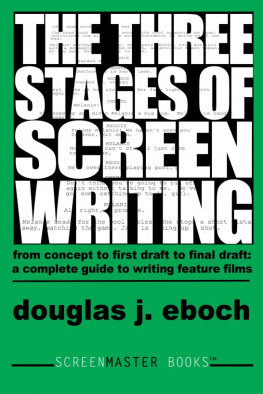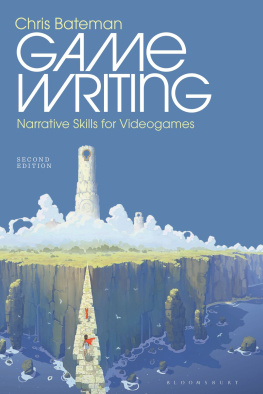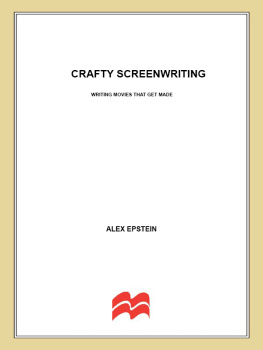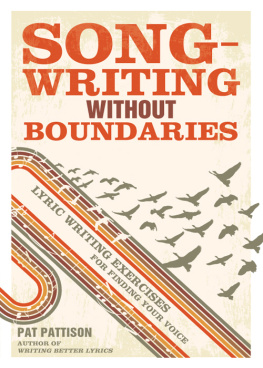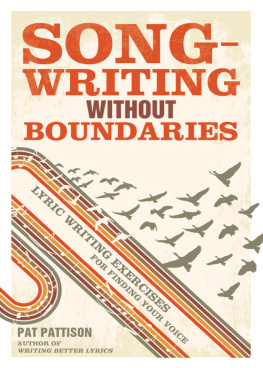H OW TO USE THIS BOOK
Oh my god, not another book aboutscreenwriting. What is it this time, Save The Dog? TheVillains Journey? Theres always some angle, some spin or formula thatwinds up sounding more like a diet plan than writing. Who is this guy and whydoes he think he can teach me a damn thing about writing scripts?
I know what you mean. I have neverbeen a fan of books on screenwriting. Theyre either too academic, too steepedin formula, or full of armchair analysis that sounds deep at the time but lateryou wonder, How the hell does any of that help me to actually write?
I cant stand those books. This isnot one of those books.
I am not a teacher. Im a writerfirst and foremost, and an experiential learner. I dont retain much from bookstudy, but when I roll up my sleeves and try something outand typically failmiserably the first timethats when it starts clicking. (Im also thesame way with board games. I cant learn the rules by reading them, only byplaying the game.) Problem is, there arent very many books out in the world tohelp autodidacts. So Ive made this one to help you vibrant, swarthyscreenwriters who need just a little direction before going off and tryingsomething dangerous yourselves.
Thats not to say you cant devourthe whole thing in one sitting. In fact, beta-testers for this book claim theygot the most out of it by powering through it in a single reading session. Butthe kinds of writing resources I use are primarily reference material, and 150Screenwriting Challenges can work the same way.
How you can use this book:
1. Flip to a random page, read achallenge, and give it a try.
This is the jump right in option that allows you to keep the book as areference piece. Use it when you get stuck on a current project, or you feelyourself stalling, or you need a distraction from other writing with newwriting.
2. Pick a section you want toconquer, and work through those challenges.
Ive done my best to organize these exercises in categories that pertain to thecraft of screenwriting. The table of contents is your friend.
3. Read it cover to cover, digest theconcepts, and then go to work.
So youre not an experiential learner. No worries. You might not need toactually try all these challenges with pen and paper or keyboard; you just needto let the ideas simmer in your brain. Whatever worksalthough, you shouldntcheat yourself out of a little homework now and then, to see what you get fromit.
4. Use it as a coaster/kindling/tableevener.
Maybe you try a few challenges and develop a hatred for them. Perhaps youarent a screenwriter, but you got this as a gift from your aunt and youre toonice to return it or re-gift it. Leave it in your bathroom and see how manyguests come out to you as closeted screenwriters. You might be surprised.
The point is self-improvement. Yourelikely reading this because you want to get better at the screenwriting thing.So do I. What follows is a series of challenges I developed for my ownself-improvement, and now theyre all in one place for easy access.
So lets get to work. You didnt getthis book for some flowery prologue.
DIALOGUE WORK
A True Story About Dialogue
On set for The Thing (2011), Iwas brought to an actors trailer to help him with a particular piece ofdialogue for that days shoot. He had a brief monologue, and he was havingtrouble with the words. He claimed it was because English was not his firstlanguage, but when I looked at the page I could tell it had nothing to do withhis grasp of English, and everything to do with the way it was written.
In several places, pairs of wordsended and began with the same sound, such as talk calmly or bend down. Withthese word choices, the actor must slow down and enunciate so the words dontmerge together. But this monologue needed to be quick and full of anxiety. Inaddition, the speech didnt match the pattern and behavior of his charactersprevious lines earlier in the script, and it spelled out his intention, givinghim no subtext to employ when he spoke it. In short, it was a mess.
It was clear someone had rewrittenthis speech and trampled over the previous one with a version that simply andclearly stated the goal of the scene. This was dialogue for an overly busystudio exec who needed to know why the hell we were all stopped to hear this charactertalk. At some point, these words helped get the movie green-lit. But now theywere making life terrible for the actor who had to say them.
After talking with the actor aboutthe purpose of the scene, I had him speak a version of the monologue in his ownwords, improvising the specifics but sticking with the clear intent of hischaracter in the moment.
Then, I took a look at the version Ihad written earlier, and compared it to the one he just improvised in front ofme. There were a lot of similarities, and hed added two authentic littledetails that better meshed with the rest of his characters story. In an hour,we had a brand new version that was easy on his tongue and conveyed all the vitalinformation while still giving him room to play with subtext. And that was mylesson on the importance of reading dialogue aloud before it ever gets toactors.
Then I learned a lesson about copingwith things out of my control when the scene was cut from the final film.
Whatever, point is, dialogue is athing you build for other human beings to say. Its a gift to an actor. Solets get better at it.
Challenge 1:
Take a talky scene of yours andrewrite it so that no character speaks more than ten words total. If you want,you can instead borrow a talky scene from a movie or TV series. The point is todiscover the bare essentials that must be said.
Challenge 2:
Step 1: Write a scene where a coupleargues. Their dialogue should reveal their true, naked feelings. All of it on the surface.
Step 2: Rewrite the scene so theyspeak the opposite of their dialogue from before. Hate becomes love, never =always, etc.
Step 3: Now take the dialogue fromStep 1 and add it in to the scene from Step 2 as NON-VERBAL communication. Bodylanguage. Action.
This challenge is called"Hitting Subtext with a Hammer."
Challenge 3:
Write a scene with four charactersarguing over what to do about a dead body they found. You can't give themnames. No character descriptions either. Just use a simple setup like CHARACTER#1, etc. You have to distinguish each character by their dialogue alone.
Challenge 4:
Write an argument, interrogation, orflirtation scene with two characters, but have them both speak in rhyme. Payattention to the meter of their words as well. Make sure the rhythm of theirdialogue remains smooth.
This challenge accomplishes twoobjectives: First, it should help you refine your ear for what rolls off thetongue for an actor. Something with rhythm and meter is easy to speak and thebest, most quotable lines from any movie have this quality.
Secondly, paying attention to wordsthat intentionally rhyme will help you later when youre writing dialogue anddiscover youve used words that rhyme unintentionally.

